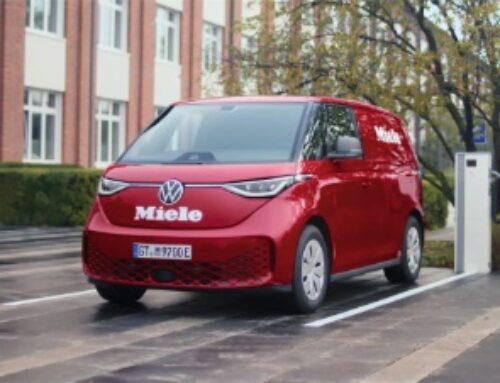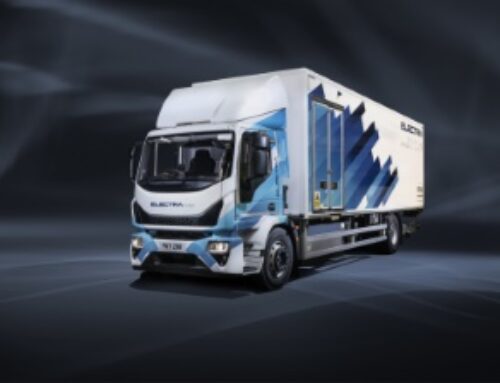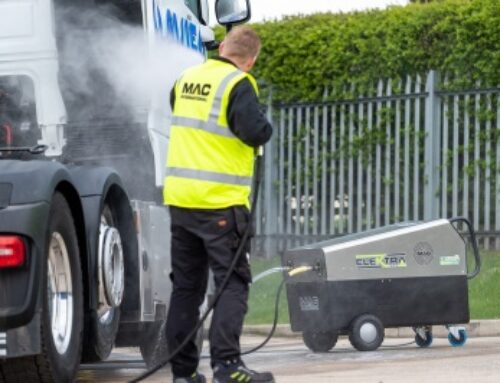Exeros cyclist detection camera wins Tip-ex innovation award
 A new cyclist detection camera solution from Exeros Technologies has won the Product Innovation award at the recent Tip-ex event in Harrogate.
A new cyclist detection camera solution from Exeros Technologies has won the Product Innovation award at the recent Tip-ex event in Harrogate.
The system uses a unique algorithm which is said to distinguish cyclists and other vulnerable road users (VRUs) from road furniture, road markings and other inanimate objects, intelligently warning drivers if they find cyclists at risk whilst too close to flanks of large vehicles.
The product is said to have been proven over 99 per cent accurate in tests piloted by Go-Ahead Buses and Exeros Technologies in central London.
The enhanced detection capability is claimed to help alleviate the problems of false alarms in the cab, which Exeros says can result from the use of older ultrasonic side proximity sensor systems.
“Because of the lower detection accuracy of older systems, drivers may become complacent in responding to those alarms or face additional driving stress whilst deciding if an alarm is genuine or not,” said the firm.
The camera also works without the need to have any technology placed on VRUs’ persons or cycles; and is said to overcome the issue of ‘shadowing’ that may be caused by newly developed radar based systems.
“Shadowing can be caused on radar systems when large vehicles pull up alongside the protected vehicle,” explained Exeros.
“Radar will not penetrate the sides of a van, for example, creating this shadow towards the rear of those adjacent vehicles. In this shadow could be a VRU. When the larger vehicle moves away, the detection of the VRU will take place much later, compared to the Exeros camera that will still see the VRU even if a large vehicle is adjacent.”
The new camera system works by using ‘computer vision’, a concept originally developed by programmers to enable computers to ‘see’ and ‘interpret’ different levels of risk much in the same way that humans can look at a domestic cat and a wild lion and decipher which is more dangerous.
When the camera detects vulnerable road users in the blind spot, it immediately alerts the driver by visually displaying the risk on a screen in the cab, and highlighting VRUs in a specific colour that varies depending on the risk level.
For example, a cyclist passing the nearside flank at speed while the vehicle is indicating left poses a higher risk than no indication and a cyclist stationary in the blind spot.
The cameras also have built-in speakers, which sound a message of caution to VRUs if one is detected in the HGV blind spot if the vehicle is about to make a turn. This improves and lessens the burden of existing side sounders, claims Exeros, which will activate every time the driver indicates left even if VRUs are not present, and will remain on in traffic regardless of if risk is present.
To enhance the accuracy of detection, the new camera system will also take readings from the vehicle. Data on speed, whether the driver is indicating, the angle of steering and other readings are said to provide better collision probability detection.
The system is also said to be intelligent enough to detect the angle of approach of a cyclist or VRU towards the vehicle and warn against a potential collision before it happens. It can additionally send an alert to vehicle CAN systems to automatically apply the brakes before the vehicle makes contact with a VRU.
The camera can be installed as original equipment or retrofitted to any HGV vehicle.
“100 cyclists died on urban roads during the year of 2013. This prompted FORS and CLOCS initiatives to positively try to combat the issue, by ensuring HGV fleets in the UK are more responsible for the safety of their vehicles on UK roads,” said Exeros Technologies.
“Many London cyclist collisions are caused by HGVs and other large vehicles and high-cab vehicles where visibility is limited, and detection of smaller road users has become difficult to overcome until now.
“Acknowledging this need to make UK roads safer, Exeros Technologies invested heavily in developing a new product that could help solve this crisis. What the company came up with has proved to be groundbreaking and will help save lives on our capital’s roads.”











